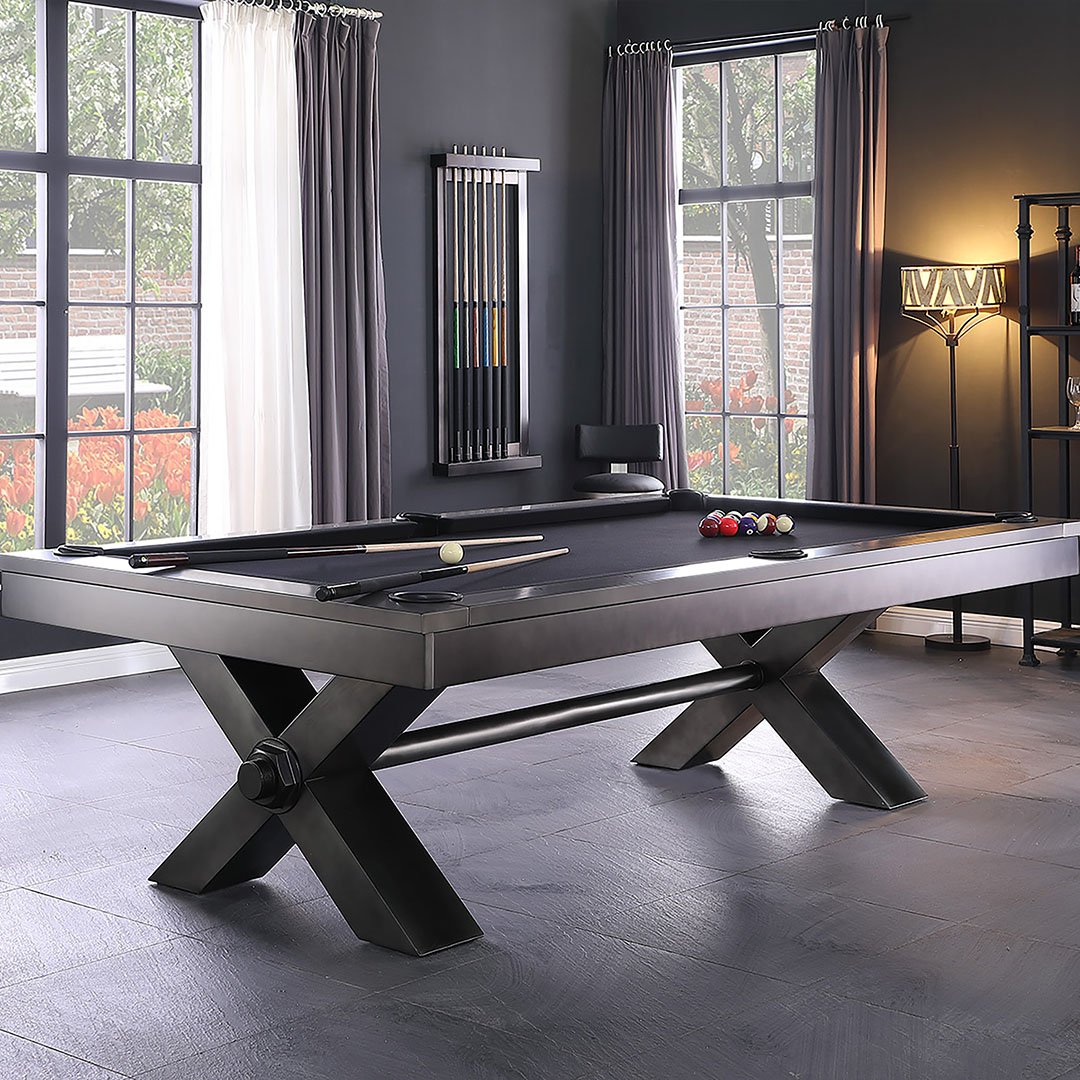Environmental and Social Impact of Outdoor Furniture Choices
Outdoor furniture is a key component of any outdoor space, whether it be a backyard, patio, or public park. But have you ever stopped to consider the environmental and social impact of the choices we make when it comes to outdoor furniture? Let's take a closer look at the environmental and social impact of outdoor furniture choices and how you can incorporate sustainable options into your outdoor space.
Overview of the Outdoor Furniture Industry
The outdoor furniture industry has seen immense growth and evolution over the past few decades. As outdoor living spaces become more popular, the demand for stylish and durable outdoor furniture has increased.
Outdoor furniture includes pieces made specifically for outdoor use such as patio furniture, pool furniture, porch swings, gazebos, outdoor sectionals, and more. The most common materials used are weather-resistant such as aluminum, wicker, teak, cedar, and synthetic rattan. Innovation in materials research has led to more options like recycled plastic lumber and lightweight concrete.
Evolution of the Outdoor Furniture Industry
The earliest patio furniture was made from aluminum and wrought iron. While durable, these materials lacked aesthetic appeal. The 1970s ushered in the trend of casual wicker seating groups that provided comfort. However, wicker requires time-intensive maintenance. In the 1980s and 1990s, cedar and teak woods grew in popularity for their natural beauty while being low maintenance.
The 21st century has seen the most innovation as consumers expect style and comfort for outdoor living. Advances in material engineering have enabled weather-resistant fabrics, performance textiles, and faux wicker made from resin. New materials like polyethylene wicker and aluminum have the look of real wicker but are more durable. Unique concepts like sectionals, daybeds, dining tables, and deep seating created an outdoor room. Fire pits, outdoor kitchens, and lighting help extend outdoor living into the evening.
Check out the evolution of outdoor furniture!
A Closer Look at Outdoor Furniture Trends, Fabrics, and Commercial Usage
Today, the demand for patio furniture has skyrocketed along with eco-friendly trends. The latest advancements in the outdoor furniture industry showcase a penchant for luxury, comfort, and aesthetic appeal. End-users are increasingly looking for high-end, durable furniture that offers not just functionality but contributes significantly to the visual aesthetics of their outdoor spaces. If you're interested in learning all about outdoor furniture trends, check out our in-depth outdoor furniture guide.


Environmentally Friendly Choices: The Impact of Different Outdoor Furniture Materials
The environmental impact of furniture materials has a significant impact on the world around us, from the raw materials used to manufacture them to their end-of-life disposal. Selecting eco-friendly materials and brands that prioritize sustainability can help reduce your patio furniture's carbon footprint.
Raw Materials and Their Impact on the Environment
The most common outdoor furniture materials include wood, plastic, aluminum, and wicker. Each has different environmental pros and cons.
Wood sourced from responsibly managed forests with Forest Stewardship Council (FSC) certification is a renewable and biodegradable material. However, some tropical hardwoods like teak may contribute to deforestation. Wood also emits carbon during manufacturing.
Recycled plastic made from post-consumer sources like milk jugs and detergent bottles diverts waste from landfills. It does not biodegrade but is very durable. Look for outdoor furniture made from high-density polyethylene (HDPE) or polypropylene (PP) recycled plastic.
Aluminum is infinitely recyclable but takes significant energy to extract and manufacture initially. Powder-coated aluminum is a good option for longevity and reduced maintenance.
Life Cycle Analysis of Outdoor Furniture
The environmental impact of outdoor furniture depends on its full life cycle from materials sourcing to production, transportation, use, and disposal.
Locally manufactured furniture from regional materials reduces the carbon emissions associated with long-distance shipping. Handcrafted pieces tend to have more careful production processes than mass-manufactured fast furniture.
The longevity of the furniture also matters - investing in high-quality, durable pieces made from sustainable materials avoids the resource costs of frequent replacement. At the end of life, look for options that are recyclable or contain recycled content.
Choosing multipurpose modular furniture and cushions/covers that can be replaced as needed increases the useful lifespan of patio sets.
Find out what outdoor furniture materials are best for your climate.
The Significance of Choosing Eco-Friendly Furniture
Given the compelling environmental issues, the choice of patio furniture can contribute towards a healthier planet. By choosing eco-friendly outdoor furniture, consumers can limit unnecessary damage to our environment and promote sustainability.
Sustainable Living Outdoors And How to Create a Green Space with Sustainable Furniture
To create a sustainable outdoor living or seating space, it is important to consider the materials and processes involved in the production of the chosen furniture. Opting for furniture made out of renewable resources or recycled materials can significantly reduce carbon footprint, thereby contributing to the cause of sustainability. This not only serves as a conscious decision in making outdoor spaces more environment-friendly but also promotes a sustainable lifestyle.

Environmental and Social Impact of Outdoor Furniture Choices
The outdoor furniture we choose for our patios, decks, and gardens has a significant social impact beyond just providing a place to relax. The materials used, manufacturing processes, and even end-of-life options for furniture can positively or negatively affect communities globally.
Also see our trends in eco-friendly outdoor furniture guide.
Influence of Outdoor Furniture on Community Spaces
The outdoor furniture in public spaces like parks, town squares, and streetside seating areas influences how welcoming and inclusive a community feels. Choosing durable, comfortable furniture made from sustainable materials with a timeless aesthetic helps create an outdoor oasis where all feel at ease.
On the other hand, cheaply made or deteriorating furniture sends the message that space is uncared for. It can discourage use by families, seniors, and those with disabilities. Prioritizing quality craftsmanship and materials for community furniture improves public spaces.
Social Responsibility in Outdoor Furniture Manufacturing
Outdoor furniture production impacts social dynamics in manufacturing communities worldwide. Brands that utilize responsible supply chains support safe, ethical factories. They help provide living wages and limit environmental damage from production.
Conversely, furniture made cheaply with exploitative labor practices and toxic materials can harm vulnerable workers and communities. Conscientious brands audit their suppliers to ensure fair labor practices.
The Effect of Furniture Choices on Worker's Rights
Opting for ethically produced outdoor furniture helps empower artisans and workers. Brands that pay fair wages, limit work hours, and monitor supply chains help protect the rights of laborers.
Making furniture from reclaimed and sustainable materials also reduces pressure to over-harvest virgin resources like teak. This helps preserve the livelihoods of communities dependent on forestry.
Strategies for Sustainable Outdoor Furniture Choices
Embracing sustainable outdoor furniture choices means looking at how products impact the environment from production to disposal. Opting for friendly patio furniture made from renewable, recyclable materials can drastically reduce the environmental footprint.
Understanding Sustainable Materials for Outdoor Furniture
Choosing sustainable materials is key to eco-friendly outdoor furniture. Reclaimed and recycled options like plastic lumber made from recycled HDPE avoid the need to harvest as many trees.
Fast-growing sustainable woods like eucalyptus and bamboo require less land and fewer chemical inputs to produce versus exotic woods like teak. Look for responsibly sourced lumber certified by the Forest Stewardship Council.
The Importance of Furniture Recycling and Repurposing
Recycling and repurposing old furniture reduces the demand for new resources and decreases waste heading to the landfill. By recycling an Adirondack chair, for example, consumers are prolonging the life of that chair while preventing more trees from being cut down for new furniture.
Educating Consumers on Sustainability in Furniture Choice
As consumers learn more about sustainability, demand increases for eco-conscious outdoor furniture. Brands committed to ethical production and reduced environmental impact advertise their values and processes clearly.
Look for detailed information on sourcing, materials, and manufacturing. Trustworthy brands get certification through organizations like the FSC. Marketplace education empowers consumers to make socially responsible patio furniture purchases.
How Furniture Influences Mood in Outdoor Spaces: The Psychology of Design
The psychology of outdoor design can significantly enhance the mood and functionality of outdoor spaces. An inviting patio with comfortable seating, colorful cushions, and a warm fire pit can create a relaxing atmosphere for social gatherings. In contrast, a minimalistic outdoor dining area with sleek, modern furniture can evoke a more formal, contemporary mood.
Shop Our Wide Range of Eco-Friendly Outdoor Furniture
If you’re interested in finding new outdoor furniture, Watson’s has everything you need.
When you shop with us, you’ll find an amazing selection and personalized service, along with the guaranteed lowest prices in the USA. We have a wide variety of outdoor furniture from the leading brands along with tons of accessories to make your outdoor space complete. Shop online or stop by your nearest Watson’s location today.
![Functional Firepit w Slatted Base-SILO-3[1]](https://5117171.fs1.hubspotusercontent-na1.net/hub/5117171/hubfs/Functional%20Firepit%20w%20Slatted%20Base-SILO-3%5B1%5D.jpg?width=1200&length=1200&name=Functional%20Firepit%20w%20Slatted%20Base-SILO-3%5B1%5D.jpg)
FAQs
What are the benefits of using eco-friendly furniture?
There are several benefits of using eco-friendly furniture. First, it helps reduce the carbon footprint by using materials and production methods that are sustainable and environmentally friendly. This contributes to the conservation of natural resources and helps mitigate climate change. Additionally, eco-friendly furniture is often made with non-toxic materials and finishes, which is beneficial for both the environment and the health of individuals who use the furniture. Furthermore, supporting sustainable brands and businesses promotes the growth of a more sustainable and responsible industry, encouraging others to follow suit. Ultimately, using eco-friendly furniture allows individuals to create a healthier and more environmentally conscious living space.
How can furniture be eco-friendly?
Furniture can be eco-friendly by adopting sustainable practices and materials. One way is by using reclaimed or recycled materials such as reclaimed wood or recycled plastics. This contributes to reducing waste and the demand for new resources. Additionally, furniture manufacturers can prioritize using non-toxic and low VOC (volatile organic compounds) finishes, paints, and adhesives during the manufacturing process, which are healthier for both consumers and the environment. It's also important to choose furniture that is designed to be durable and long-lasting, reducing the need for frequent replacements. Lastly, selecting furniture from manufacturers with certifications for sustainable practices, such as the Forest Stewardship Council (FSC) or Cradle to Cradle, ensures the furniture has been produced with minimal environmental impact and ethical practices.
What is a sustainable material for furniture?
A sustainable material for furniture is one that is sourced, produced, and used in a way that has minimal negative impact on the environment and society. One example of a sustainable material for furniture is bamboo. Bamboo is a fast-growing grass that can be harvested in just a few years, making it an easily renewable resource. It requires minimal water, pesticides, and fertilizers to grow, which reduces its environmental footprint compared to other materials like wood. Additionally, bamboo is strong and durable, making it suitable for a variety of furniture applications. Using bamboo as a material for furniture promotes sustainability by reducing deforestation, promoting biodiversity, and minimizing carbon emissions.










